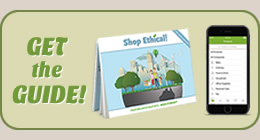Bamboo
“One of the most versatile raw materials on the market, bamboo grows quickly, easily, and is a completely renewable and sustainable material. The use of bamboo has already reduced the devastation of widespread deforestation, and requires fewer pesticides and less water to grow. This makes it an excellent alternative to cotton and other synthetic blends. The material can be woven to a thread as fine and smooth as silk, or woolly yarn as warm and soft as cashmere.”
What isn’t often mentioned is that the process of refining bamboo into fiber often uses toxic bleaching agents such as chlorine, carbon disulfide, and sulfuric acid, producing an environmentally hazardous chemical cocktail that is dumped into waterways or landfills. (More on the wider questions of bamboo).
Hemp
“This non-psychoactive member of the cannabis family is definitely a lesser-known clothing alternative with some promise. In recent years, mainstream designers such as Calvin Klein and Stella McCartney have begun using this material in their products, while smaller unknown designers are also picking up this trend. It requires far less water and fewer pesticides to grow than cotton. This fiber also requires even fewer chemicals in the manufacturing process than bamboo. One of the biggest hurdles comes from the U.S. government is that hemp is not legal to grow in the United States, so the majority of this material is imported from China.”
Lyocell
“Sustainable origins surround this biodegradable fabric, trademarked Tencel. Made from the wood pulp of the eucalyptus tree, this material is largely imported from South Africa and is rapidly rising in popularity as a common textile. It is used to form stretchy knit garments, as it is quite comparable to rayon. It can take on many forms and textures once blended with other fabrics. The only downside of this textile is that it can be quite difficult to dye, resulting in the use of harsh chemicals.”
Flax
“The more we study this fibrous plant, the more we learn about its health and environmental benefits on the country. While flax seed is commonly recommended as a dietary supplement, little was known about its other uses until recently. The grain is used as a food source, while the fiber is now being used as a cotton-like material. The flax fiber blends create a soft and strong textile suited for knit garments. Right now, it is most commonly used in linen, but the Hanes garment company is considering introducing it to its products in the near future.”
(Reproduced from Bambooki.com)
See more at ‘Eco Fibres – making informed choices’.
- See where to get Hemp clothing: Margaret River Hemp Company, Sativa Sutra Hemp Shop, Made In Hemp, Braintree Hemp, All Seasons Comfort, Kashi



